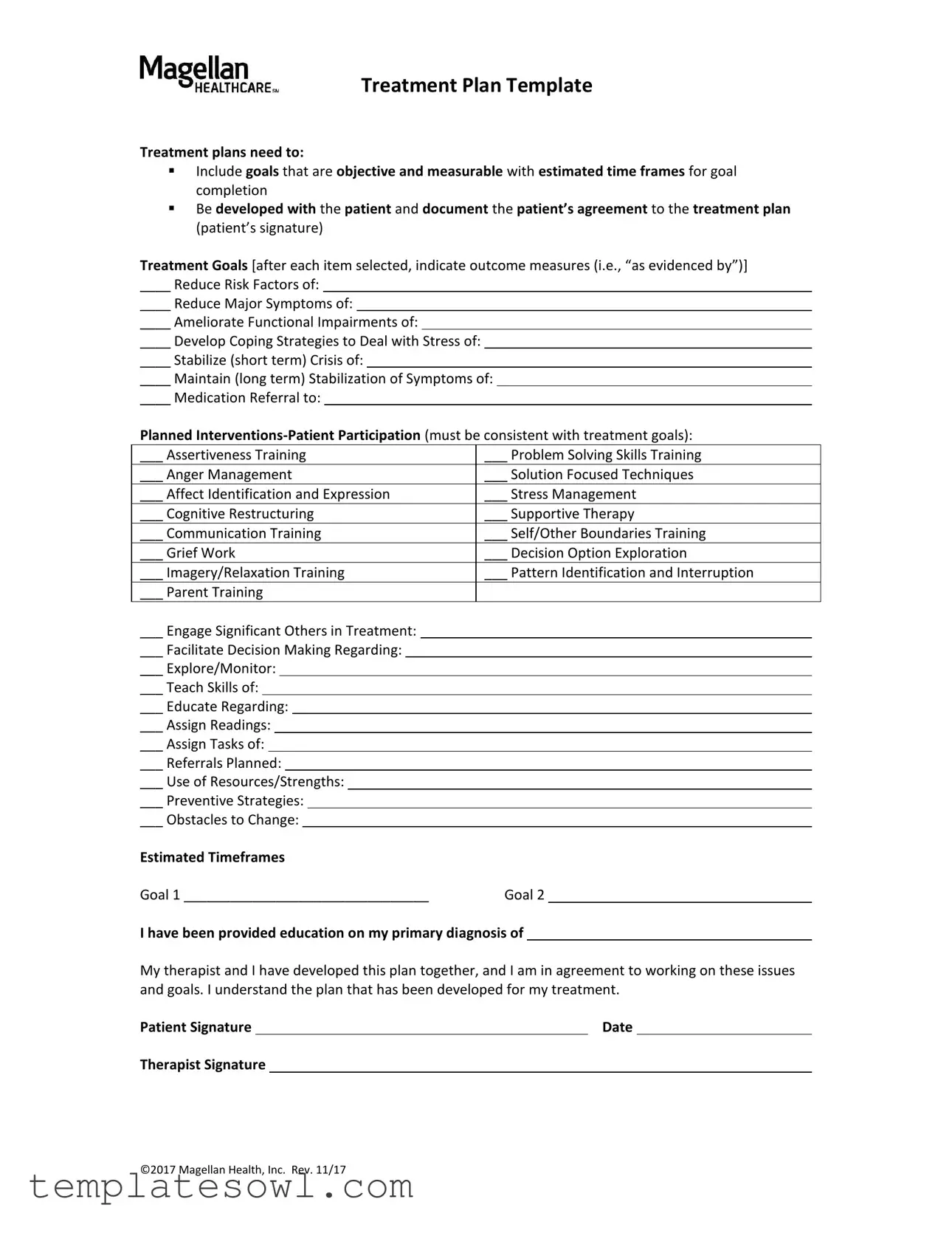Treatment Plan Template
Treatment plans need to:
▪Include goals that are objective and measurable with estimated time frames for goal completion
▪Be developed with the patient and document the patient’s agreement to the treatment plan (patient’s signature)
Treatment Goals [after each item selected, indicate outcome measures (i.e., “as evidenced by”)]
____ Reduce Risk Factors of:
____ Reduce Major Symptoms of:
____ Ameliorate Functional Impairments of:
____ Develop Coping Strategies to Deal with Stress of:
____ Stabilize (short term) Crisis of:
____ Maintain (long term) Stabilization of Symptoms of:
____ Medication Referral to:
Planned Interventions-Patient Participation (must be consistent with treatment goals):
|
|
|
|
|
|
|
|
|
|
|
|
|
|
|
___ Assertiveness Training |
___ Problem Solving Skills Training |
___ Anger Management |
___ Solution Focused Techniques |
___ Affect Identification and Expression |
___ Stress Management |
___ Cognitive Restructuring |
___ Supportive Therapy |
___ Communication Training |
___ Self/Other Boundaries Training |
___ Grief Work |
___ Decision Option Exploration |
___ Imagery/Relaxation Training |
___ Pattern Identification and Interruption |
___ Parent Training |
|
|
|
___ Engage Significant Others in Treatment: |
|
|
|
|
___ Facilitate Decision Making Regarding: |
|
|
|
|
___ Explore/Monitor: |
|
|
|
|
___ Teach Skills of: |
|
|
|
|
___ Educate Regarding: |
|
|
|
|
___ Assign Readings: |
|
|
|
|
___ Assign Tasks of: |
|
|
|
|
___ Referrals Planned: |
|
|
|
|
___ Use of Resources/Strengths: |
|
|
|
|
___ Preventive Strategies: |
|
|
|
|
___ Obstacles to Change: |
|
|
|
|
Estimated Timeframes |
|
|
|
Goal 1 ________________________________ |
Goal 2 |
|
|
I have been provided education on my primary diagnosis of
My therapist and I have developed this plan together, and I am in agreement to working on these issues and goals. I understand the plan that has been developed for my treatment.
Therapist Signature
©2017 Magellan Health, Inc. Rev. 11/17

